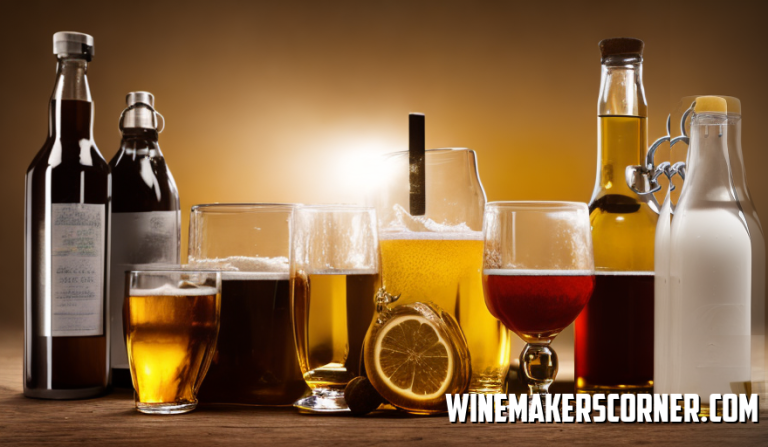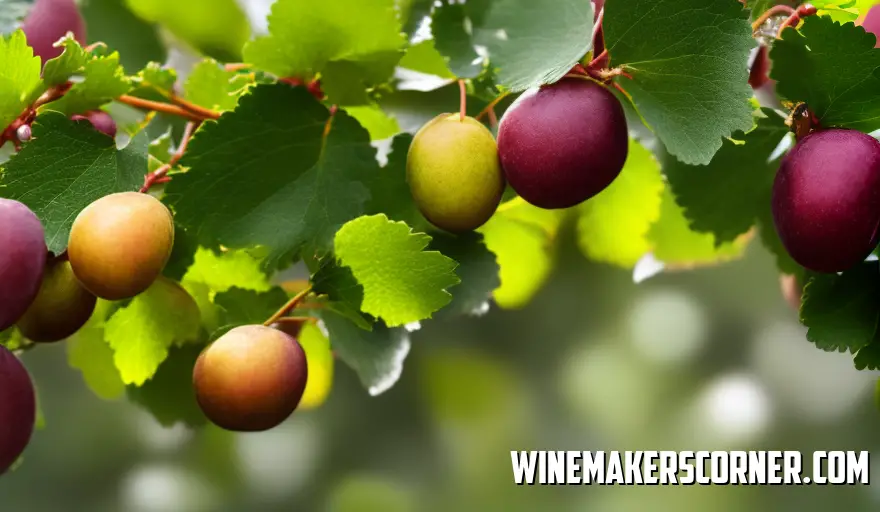If you’ve ever baked your own bread or made your own beer or wine you know how crucial bread yeast can be to achieving great results. This tiny but mighty organism plays a critical role in fermentation – breaking down sugars into alcohol – but heres the kicker: it can withstand high levels of alcohol that would otherwise kill it off! In this ultimate guide to alcohol tolerance in bread yeast we’ll dive into what makes it so hardy compare different strains’ abilities to handle ethanol and uncover some fascinating scientific facts about its resilience. So whether you’re sipping on something boozy or munching on some fresh baked carbs get ready for an eye opening look at these remarkable microorganisms.
Understanding Alcohol Tolerance in Bread Yeast
Uncovering the secrets behind bread yeast’s remarkable alcohol tolerance capacity carries vital implications for baking and fermentation processes worldwide. The better we understand yeast’s behavior towards this attribute, the easier it gets for us to improve our current techniques leading towards better final products overall quality wise. Saccharomyces cerevisiae or bread yeast plays a vital role as a microorganism responsible for transforming sugar into both carbon dioxide while leavening dough with unique flavors solely found in baked goods.
Despite its magical elements, there are limits to how much alcohol these organisms can handle before growth becomes inhibited. This threshold varies due to factors such as genetics, temperature shifts along with nutrient availability that are crucial during the product development phase.
Optimization within fermentation conditions required for improved quality is no easy task and requires a keen understanding of the various factors involved in this process.
One critical aspect revolves around yeast’s cell membrane composition, as specific lipids and proteins provide enhanced resilience against high alcohol levels, resulting in superior strains. By studying these components carefully, new avenues towards engineering even more reliable yeast variations catering directly to individual production needs would open up. One other aspect worth delving into is the stress response mechanisms present in yeast cells.
Alcohol exposure prompts them to activate various defensive strategies that enable them to survive tough conditions more adeptly. Decoding these mechanisms could unlock innovative ways of enhancing yeast performance during fermentation. Additionally, it’s vital to take note of the role played by nutrients in supporting yeast growth despite increasing alcohol levels – maintaining a sufficient supply of crucial elements such as nitrogen and vitamins can bolster their resilience against any unpleasant aftermath from alcohol consumption.
Ultimately, understanding how bread yeast tolerates alcohol presents an exciting opportunity for elevating the taste and texture of our cherished fermented products. Unraveling everything from cellular makeup to stress responses and nutrition optimization will undoubtedly broaden our knowledge about this critical component used for baking.
Factors Affecting Yeast’s Alcohol Tolerance
The subject of alcohol tolerance in yeast is pretty interesting stuff. It has a crucial role to play in the production of bread, wine, and beer. A whole bunch of stuff influences a yeasts ability to withstand different levels of alcohol and this article is going to explore some of these factors so we can unlock the secrets behind yeasts remarkable alcohol tolerance. One key consideration when it comes to alcohol tolerance is the type of yeast you’re using.
Different strains have different levels of resistance to alcohol. For example some strains like Saccharomyces cerevisiae can resist up to 12 15% ABV while others struggle with anything beyond 5%. So picking the right strain is fundamental if you want your fermentation efforts to be successful.
Temperature also has an impact on how well yeast can handle alcohol. Higher temps can speed up fermentation but could also cause stress for the cells leading to lower levels of alcohol tolerance and unwanted off flavors.
Conversely cooler temperatures will slow down fermentation but are better for increasing resistance. Sugar concentration is another factor that plays into alcohol tolerance. Giving your yeast more sugar gives them more fuel for fermentation but puts extra pressure on the cells – so finding that balance between sugar levels and how healthy your yeast are is vital if you want optimal results from your fermentation efforts.
Finally nutrients are also crucial if you want healthy growth and activity from your yeast cells.
To enable effective fermentation by yeasts requires providing them with the necessary nitrogen compounds plus essential vitamins and minerals alongside other necessary elements they need to function properly within their environment; insufficient amounts limit cell growth capacity and can affect the performance of these organisms adversely vis a vis harmful alcoholic substances (which yeast helps transform). These microorganisms also have to grapple with the osmotic pressure imposed by high sugar concentrations, which can cause dehydration and reduce their ability to cope with higher alcohol levels. Other factors that you must consider when examining yeasts alcohol tolerance include pH levels given how much they affect both metabolic activity and survival.
Its essential to appreciate all of this when looking for optimal results in bread making or winemaking processes that involve various yeasts – it makes all the difference whether you’re a professional baker or a home enthusiast.
Different Types of Bread Yeasts and Their Tolerances
Baking enthusiasts listen up! Bread yeast is the secret ingredient that can take your baking skills to the next level. And did you know that there are different types of yeast each with their own unique characteristics? Its true! One of these characteristics is alcohol tolerance.
Lets start with traditional active dry yeast. This type of yeast is tough and adaptable with a moderate amount of alcohol tolerance. However before you can use it you have to activate it by dissolving it in warm water with sugar. Once activated it ferments at a steady pace to help your bread rise.
But theres also instant or rapid rise yeast, which has been gaining popularity among bakers lately. This type of yeast has a higher alcohol tolerance than active dry yeast and doesn’t need to be activated beforehand. Its small granules can be mixed directly into your dry ingredients, which accelerates fermentation for quicker results.
And for those who want a tangy twist to their baked goods sourdough starter is another option for leavening bread.
Made up of wild yeasts and lactic acid bacteria (yum!) sourdough starters vary in alcohol tolerance depending on the strains present within them. So there you have it—different types of bread yeast and how they can improve the taste and texture of your baked goods! Baking scrumptious bread requires using the suitable kind of yeast that matches our needs and preferences. For sweet doughs with high sugar content osmotolerant yeast is indispensable! The challenge with high concentrations of sugar lies in its ability to slow down fermentation and weaken gluten structure; however osmotolerant yeasts are unique as they can withstand these obstacles by tolerating elevated levels of sugar while still preserving their ability to ferment effectively.
When baking bread being aware of each types distinctive traits assists us in making informed choices when determining which variety suits our recipe best – whether we desire rapid outcomes or intricate flavors – ultimately ensuring ideal results every time we bake. In summary diverse forms of bread yeasts exist that vary not only in their activation techniques but also in their tolerance towards alcohol and sugar levels.
This knowledge equips us to choose the appropriate yeast type for our recipe resulting in heavenly bread tailored to our taste buds while broadening our culinary horizons!
Impact of Temperature on Alcohol Production
Bread yeasts ability to produce alcohol effectively depends greatly on the surrounding temperature during fermentation. Any deviation from an optimal temperature range would have significant consequences on alcohol tolerance potential . In this article we’ll examine how varying temperatures affect ethanol output from bread yeasts and provide some guidance on optimizing conditions accordingly .
Starting off lets talk about what could be considered as ideal growth and fermentation conditions for bread yeasts – usually between 25°C (77°F) & 35°C (95°F) but most efficient at around 30°C(86°F). At these temperatures bread yeast cells display maximum metabolic activity in converting sugar into ethanol together with carbon dioxide during each stage of fermenting . However any variations beyond this range will lead to complications such as sluggishness caused by lower temperature or interference caused due to high temperatures.
When heat rises beyond the temperature at which bread yeast grow best (35-40°C or 95-104°F), it stresses out the cells. This causes lower fermentation efficiency and an increase in undesirable byproducts, like fusel alcohols, that spoil your beverage’s flavor. Yet there’s a silver lining: high temperatures might help if applied wisely through “heat shocking.” Exposing yeast briefly to slightly hotter temps than usual (around 40°C or 104°F) improves its capacity to withstand ethanol later on during fermentation.
Just don’t overdo it; extended periods under these conditions may kill off your yeasts! To sum up, comprehending how much warmth influences alcohol formation empowers you to unlock extraordinary levels of alcohol resistance in bread yeasts successfully. By keeping optimal fermentation conditions and utilizing heat shocking appropriately, you’ll explore all the potential of this microorganism when producing delicious drinks with a higher alcoholic content.
Enhancing Alcohol Tolerance for Better Fermentation
Alcohol tolerance in bread yeast is a fascinating topic that deserves more attention: higher alcohol levels in fermented dough usually mean slower growth rates for yeast which leads to below average fermentation results. To get better bread we need to understand what influences how our yeasts handle their alcoholic environment. The different strains of yeasts we use react differently to alcohol so selecting a robust strain is key for better results. Scientists have been doing their part by identifying strains that are naturally more resistant to alcohol – following their lead can help bring our bread making skills up a notch! Balancing temperature is also essential in making sure fermentation happens properly; we want high temperatures but don’t want our yeast pals stressed out! An optimal nutrient profile with adequate nitrogen levels and sugar content helps ensure good cell growth while preventing osmotic stress on cells which makes for stronger more tolerant yeast populations. For even greater results considering incorporating some oxygen into the dough – it could help give the final product an extra booze loving boost! Yeast is a key ingredient in bread-making processes but achieving optimal fermentation outcomes requires careful consideration of multiple factors that influence yeast performance.
Oxygen is an essential element that supports the synthesis of sterols and unsaturated fatty acids – two critical components necessary for maintaining cellular membrane integrity under alcoholic stressors. Another approach worth considering is adaptive evolution or directed evolution where yeast strains are gradually exposed to higher alcohol levels over time: this creates an environment that promotes progressive adaptation by the yeast cells thus enhancing their capacity to handle challenging fermentation conditions. Temperature regulation – critical for optimal growth – should also be taken into account along with nutrient availability during the fermentation process. By implementing tailored strategies based on all these aspects bakers can achieve superior results in terms of bread taste and texture profile while boosting overall quality standards.
The Science Behind Yeast’s Ethanol Resistance
The domain of bread baking is undoubtedly fascinating; it revolves around yeast and its contribution towards creating delicious fermented loaves! The key aspect of such fermentation lies within yeasts’ ability to tolerate alcohol perfectly! But what explains this unique trait? Being a single celled organism thriving on sugar while producing both carbon dioxide and ethanol as by products via fermentation – which is crucial for any effective bread making method- makes for interesting scientific discoveries! Different yeasts display varying levels when it comes to alcohol tolerance but why? Knowing the composition and function of their cell membranes sheds light on this. Yeasts cell membrane acts as a barrier against ethanol toxicity comprising lipids and proteins working together to maintain an ideal environment within the cell.
Ethanol can quickly disrupt this balance; thus some strains have evolved with stronger membranes having increased lipid content and specialized proteins such as aquaporins that help regulate ethanol molecule intake into cells more efficiently. Furthermore heat shock proteins (HSPs) also play an important role in ensuring yeast resistance against ethanol related stress. Highly sensitive proteins (HSPs) have an important job of protecting other proteins from harm caused by environmental factors like high alcohol levels.
In addition to cellular adaptations yeast cells have developed metabolic pathways that contribute to their ability to resist ethanol toxicity better. One example is the conversion of acetaldehyde – generated during fermentation – into less toxic compounds such as acetate or acetyl CoA. So how can we practically use this newfound knowledge?
Without a doubt! By studying yeasts natural alcohol tolerance mechanisms we can pick strains with higher resistance levels for targeted applications involving bread making or even wine production. Overall learning more about yeasts ethanol resistance uncovers exciting possibilities for elevating our culinary experiences and deepening our appreciation for these unseen yet crucial microorganisms at work in our kitchens every day.
Techniques to Measure Alcohol Tolerance in Yeast
Yeasts ability to tolerate alcohol has fascinated experts for years as far as bread and wine production is concerned.. Maximizing this microorganisms potential requires comprehension of its level of tolerance when it comes to this substance.. In this section we will investigate several approaches used for gauging yeasts ability in handling ethanol.
One primary method utilized is referred to as a spot assay where researchers expose yeasts on solid media plates with varying levels of ethanol concentration before observing growth rate across multiple levels.. They compare how well these microorganisms can withstand alcohol exposure. It provides a quick overview thats useful for researchers. Liquid culture assays are another approach used by scientists to cultivate yeast cells in liquid media containing increasing levels of ethanol..
The growth rate monitored over time helps identify any inhibitory effects caused by fermentation rates or cell health due to alcohol.
Another sophisticated method used is flow cytometry where fluorescent dyes and lasers assess cell viability post exposure to ethanol.. This high throughput method enables rapid quantification of living versus dead cells under various conditions.
A crucial breakthrough has been attained with regards to genotypic analysis techniques being used as effective instruments for comprehending alcohol tolerance on a molecular scale. Through DNA sequencing, experts have identified the particular genes and mutations responsible for enhancing resistance against ethanol toxicity. Consequently, we can ascertain that a range of methods exist in evaluating yeast’s endurance when it comes to alcohol – from simple spot assays to more intricate genomic analyses.
By using these approaches, we open doors towards unraveling the secrets behind yeast’s incredible capacity to thrive in alcoholic settings – ultimately benefiting both wine production and bread-making processes.
Role of Sugar and Nutrients in Yeast’s Alcohol Tolerance
Have you ever wondered how sugar and nutrients impact yeasts ability to handle alcohol during bread making? Its pretty cool stuff! In this guide we’ll examine the world of yeast and its interactions with these vital components.
For instance did you know that sugar serves as the primary fuel source for yeast fermentation? This enables cells to generate carbon dioxide and ethanol through metabolism. However getting the right balance between sugar content and yeast activity is essential – not enough will slow things down while excessive amounts may inhibit growth due to rapid alcohol production.
Nutrients like nitrogen or phosphorus also matter because they boost cell growth while influencing overall health in your dough culture population. Alcohol tolerance varies based on each unique genetic makeup or adaptations according to environment conditions amongst different strains of yeasts – some can withstand higher levels than others! Consider choosing a high alcohol tolerance strain if rich aromas or complex flavor profiles are desired in baked goods. Yeasts’ ability to tolerate alcohol depends significantly on temperature levels during fermentation.
If it’s too high, there’ll be a lot more ethanol produced at once – but overheating can cause profound cellular damage or destroy the yeast altogether. Thus precise control of the environmental conditions is vital for achieving desired outcomes in bread baking. By grasping how sugar content and nutrient availability affect alcohol tolerance alongside other factors such as ambient heat levels, bakers can manipulate their selected yeast strains into producing beautifully flavorful loaves that leave lasting impressions on eaters.




